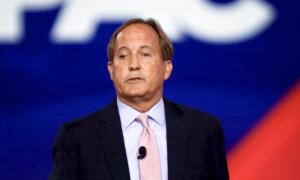HUNTSVILLE, Texas—The Texas Supreme Court halted Thursday night’s scheduled execution of a man who would have become the first person in the U.S. put to death for a murder conviction tied to a diagnosis of shaken baby syndrome.
The late-night ruling to spare for now the life of Robert Roberson, who was convicted of killing his 2-year-old daughter in 2002, capped a flurry of last-ditch legal challenges and weeks of public pressure from both Republican and Democratic lawmakers who say he is innocent and was convicted based on flawed evidence.
For hours on Thursday night, Roberson had remained in a prison holding cell a few feet from America’s busiest death chamber at the Walls Unit in Hunstville.
“He praised God and thanked supporters,” said Texas Department of Criminal Justice spokesperson Amanda Hernandez, who spoke with Roberson after the court stayed his execution.
Although Texas’ highest court normally does not weigh in on criminal cases, how it got involved in Roberson’s case in the final hours underlined the extraordinary maneuvers used by a bipartisan coalition of state House lawmakers who have come to his defense.
Blocked by courts and Texas’ parole board in their efforts to spare Roberson’s life, legislators on Wednesday took a different route: issuing a subpoena for Roberson to testify before a House committee next week, days after he was scheduled to die by lethal injection.
Less than two hours before Roberson’s execution, a judge in Austin granted the lawmakers an order upholding the subpoena, putting the execution on pause. An appeals court then briefly reversed that decision but was overruled by the high court’s order.
“We’re deeply grateful to the Texas Supreme Court for respecting the role of the Texas legislature in such consequential matters,” Democratic Rep. Joe Moody and Republican Rep. Jeff Leach wrote in a joint statement.
Roberson, 57, was convicted of killing of his daughter, Nikki Curtis, in the East Texas city of Palestine. His lawyers and some medical experts say his daughter died not from abuse but from complications related to pneumonia.
Gov. Greg Abbott had authority to delay Roberson’s punishment for 30 days. Abbott has halted only one imminent execution in nearly a decade as governor and has not spoken publicly about the case.
Earlier Thursday, the U.S. Supreme Court refused to halt the execution, although Justice Sonia Sotomayor — in a 10-page statement about the case — urged Abbott to grant a 30-day delay.
Lawyers ask Texas governor and Supreme Court to intervene Roberson’s lawyers had waited to see if Abbott would grant Roberson a one-time 30-day reprieve. It would have been the only action Abbott could take in the case as the Texas Board of Pardons and Paroles on Wednesday denied Roberson’s clemency petition.
The board voted unanimously, 6-0, to not recommend that Roberson’s death sentence be commuted to life in prison or that his execution be delayed. All board members are appointed by the governor. The parole board has recommended clemency in a death row case only six times since the state resumed executions in 1982.
The one time Abbott halted an imminent execution was when he spared the life of Thomas Whitaker in 2018.
Bipartisan committee takes extraordinary step to try to stop execution The Texas committee on Wednesday held an all-day meeting on Roberson’s case. In a surprise move at the end of the hearing, the committee issued a subpoena for Roberson to testify next week.
During its meeting in Austin, the committee heard testimony about Roberson’s case and whether a 2013 law created to allow people in prison to challenge their convictions based on new scientific evidence was ignored in Roberson’s case.
Anderson County District Attorney Allyson Mitchell, whose office prosecuted Roberson, told the committee a court hearing was held in 2022 in which Roberson’s attorneys presented their new evidence to a judge, who rejected their claims.
“Based on the totality of the evidence, a murder took place here. Mr. Roberson took the life of his almost 3-year-old daughter,” Mitchell said.
Most of the members of the committee are part of a bipartisan group of more than 80 state lawmakers, including at least 30 Republicans, who had asked the parole board and Abbott to stop the execution.
Case puts spotlight on shaken baby syndrome Roberson’s case has renewed debate over shaken baby syndrome, known in the medical community as abusive head trauma.
His lawyers as well as the Texas lawmakers, medical experts and others including bestselling author John Grisham say his conviction was based on faulty and now outdated scientific evidence. The diagnosis refers to a serious brain injury caused when a child’s head is hurt through shaking or some other violent impact, like being slammed against a wall or thrown on the floor.
Roberson’s supporters don’t deny head and other injuries from child abuse are real. But they say doctors misdiagnosed Curtis’ injuries as being related to shaken baby syndrome and that new evidence has shown the girl died from complications related to severe pneumonia.
Roberson’s attorneys say his daughter had fallen out of bed in Roberson’s home after being seriously ill for a week.
Roberson’s lawyers also suggested his autism, then undiagnosed at the time of his daughter’s death, was used against him as authorities became suspicious of him because of his lack of emotion over her death. Autism affects how people communicate and interact with others.






